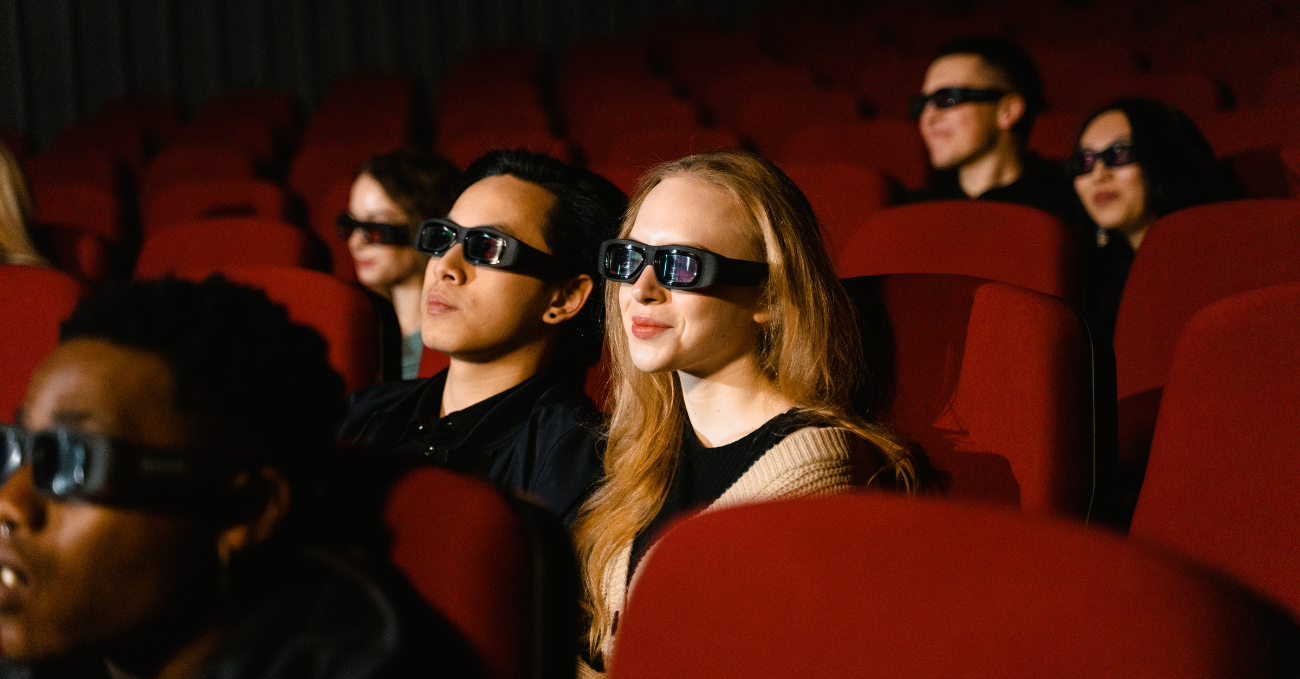Transforming the Audience Experience with VR and AR
Many aspects of our society have been profoundly impacted by the development of technology, especially the entertainment industry, which includes theatre. Virtual Reality (VR) and Augmented Reality (AR) are technologies that have massively changed how people think about entertainment and performance. These technologies are extremely versatile and can be used both to enhance the spectator’s experience without altering the essence of theatrical representation and to completely transform performances compared to classical theatre. The concept of augmented reality was first introduced in 1992 by Caudell and Mizell[1], and followingly expounded upon by Ronald Azuma, who outlined its potential applications in the entertainment sector, among others[2]. However, the real breakthrough came between 2010 and 2015, with the advent of VR headsets. In 2015, Microsoft’s HoloLens introduced the ability to overlay virtual objects onto the real world, fostering new experimentation. In the same year, the platform The Void was launched, becoming popular thanks to hyper-reality experiences that combined virtual reality with interactive physical environments. Due to its popularity, the platform was able to collaborate with major companies like Disney and work on internationally renowned projects such as Star Wars: Secrets of the Empire. The COVID-19 pandemic provided a strong push for the adoption of immersive technology, forcing theatres worldwide for necessity to experiment with digital formats and virtual experiences[3] (LINK).
The VR and AR in the entertainment market
The immersive technology market is expanding, driven by sectors such as entertainment, education, healthcare, and business, which are increasingly adopting VR and AR technologies. In 2023, the value of the immersive technology market was $29.13 billion, and future projections indicate it will reach $134 billion by 2030, with an annual growth rate of over 25%[4] (LINK). With over fifty percent of the market in 2023, the video game industry continues to be the leading industry for VR and AR in entertainment[5] (LINK). However, in live events and theatre these technologies have increasingly been used. Artificial Intelligence (AI) is being used into VR and AR experiences to enhance interactions and make them more accessible and natural[6] (LINK). Furthermore, as smart glasses and headsets have become more powerful and lighter, their latest developments have made their adoption easier for a wider range of users. Thanks to government-sponsored research initiatives like Horizon Europe, the growing investments in digital innovation, and the growing use of XR technologies in industries like entertainment, healthcare, and education, the immersive technology market in the EU is predicted to reach $108 billion by 2030[7] (LINK).
Enhancing theatre accessibility and audience engagement
Immersive technologies present plenty of possibilities to improve theatrical productions, enabling creativity in both the performance and its inclusivity. By employing virtual reality headsets, real-time subtitles and scene-specific context it is possible to improve the audience immersion and promoting inclusivity among people with hearing or language disabilities. This will increase the amount of people who attend plays, particularly in tourist cities where accessibility is severely limited by language barriers. Moreover, the use of these technologies increases the potential audience for theatrical plays because it also overcome geographic restrictions by enabling viewers to enjoy live performances from a distance in completely immersive virtual theatres. It will allow people who are unable to travel because of age-related problems or disabilities to attend to the performances not only in two dimensions, as it is now in the case of watching a theatre show on television, but to attend performances in a very immersive experience. Finally, visual effects can be added to performances using VR and AR technologies, bridging the gap between traditional performing arts and modern production techniques.
Applications of VR/AR in Theatrical Performances
The incorporation of VR and AR into theatre has completely transformed how audiences interact with displays, these technologies have introduced new means to boost storytelling, accessibility, and interaction. The potential of these technologies in live performances has been shown by a variety of projects:
- National Theatre’s Immersive Storytelling Studio: To increase audience engagement, the National Theatre in the UK has adopted immersive technologies. Their Immersive Storytelling Studio investigates the potential of VR and AR to produce more immersive and engaging experiences (LINK)[8].
- White Dwarf (Lefkos Nanos) by Polyplanity Productions: this experimental project creates a novel theatrical experience by fusing augmented reality with live performance through the interaction of digital materials with performers on stage (LINK)[9].
- Smart Subs by Demokritos Institute: This project makes theatre performances more accessible to international and hearing-impaired audiences by using AR-powered smart captions that provide live subtitles (LINK)[10].
- XRAI Glass: The use of AI technology in this case in combination with AR smart glasses, can provide real-time transcriptions and translations, enabling people with hearing impairments to follow along or comprehend plays in multiple languages (LINK)[11].
- National Theatre Smart caption glasses (UK): The National Theatre in collaboration with Accenture and a team of speech and language experts led by Professor Andrew Lambourne has developed a “Smart caption glasses” solution as part of their accessibility program for their performances. The smart caption glasses have been in effect since 2018 (LINK), and have also been demonstrated in the 2020 London Short Film Festival for cinematic screenings (LINK).
These applications show how VR and AR are improving visual effects while also increasing accessibility and inclusivity in theatre. Theatre companies can reach a wider audience, overcome language hurdles, and produce captivating, interactive shows that push the limits of conventional theatre by incorporating immersive technologies.
Conclusion
As technology advances, VR and AR technology will become increasingly used in theatrical performances, both to create a more immersive experience and to make theatre more accessible, attracting new audiences and expanding the reach of the performing arts. In an increasingly digital environment, these technologies will guarantee that live performances continue to be both revolutionary and relevant in the cultural context. Additionally, the creation of AI-powered VR and AR tools will enable to modify and customize shows according to audience preferences, resulting in more profound emotional experiences and unprecedented accessibility to theatre.
References
Azuma, Ronald T. “A survey of augmented reality.” Presence: teleoperators & virtual environments 6.4 (1997): 355-385Iudova-Romanova, Kateryna, et al. “Virtual reality in contemporary theatre.” ACM Journal on Computing and Cultural Heritage 15.4 (2023): 1-11.
Jernigan, Daniel, et al. “Digitally augmented reality characters in live theatre performances.” International Journal of Performance Arts and Digital Media 5.1 (2009): 35-49.
Pike, Shane. “” Make it so”: Communal augmented reality and the future of theatre and performance.” Fusion Journal 15 (2019): 108-118.
Pike, Shane. “Virtually relevant: AR/VR and the theatre.” Fusion Journal 17 (2020): 120-128.
Srinivasan, Saikrishna. Envisioning VR theatre: Virtual reality as an assistive technology in theatre performance. Diss. The University of Waikato, 2024.
—
[1] Caudell, Thomas & Mizell, David. (1992). Augmented reality: An application of heads-up display technology to manual manufacturing processes. Proceedings of the Twenty-Fifth Hawaii International Conference on System Sciences. 2. 659 – 669 vol.2. 10.1109/HICSS.1992.183317.
[2] Azuma, Ronald T. “A survey of augmented reality.” Presence: teleoperators & virtual environments 6.4 (1997): 355-385
[3] Signiant. VR & AR: How COVID-19 Accelerated Adoption, According to Experts. 2024
[4] Verified Market Reports. Immersive Technologies Market Report. 2024
[5] Verified Market Reports. Immersive Technologies Market Report. 2024.
[6] Reuters. VR, AR headsets demand set to surge as AI lowers costs, IDC says. 2024.
[7] Mordor Intelligence. Europe Immersive Entertainment Market Report. 2024.
[8] National Theatre. Immersive Storytelling Studio. 2024.
[9] Polyplanity Productions. White Dwarf (Lefkos Nanos). 2024.
[10] Demokritos Institute. Smart Subs Project. 2024.
[11] XRAI Glass. Smart Glasses for Real-Time Subtitles. 2024.

Greta Ioli
Greta Ioli is an EU Project Manager in the R&D department of Maggioli Group, one of Italy's leading companies providing software and digital services for Public Administrations. After earning a degree in International Relations – European Affairs from the University of Bologna, she specialized in European projects. Greta is mainly involved in drafting project proposals and managing dissemination, communication, and exploitation activities.





